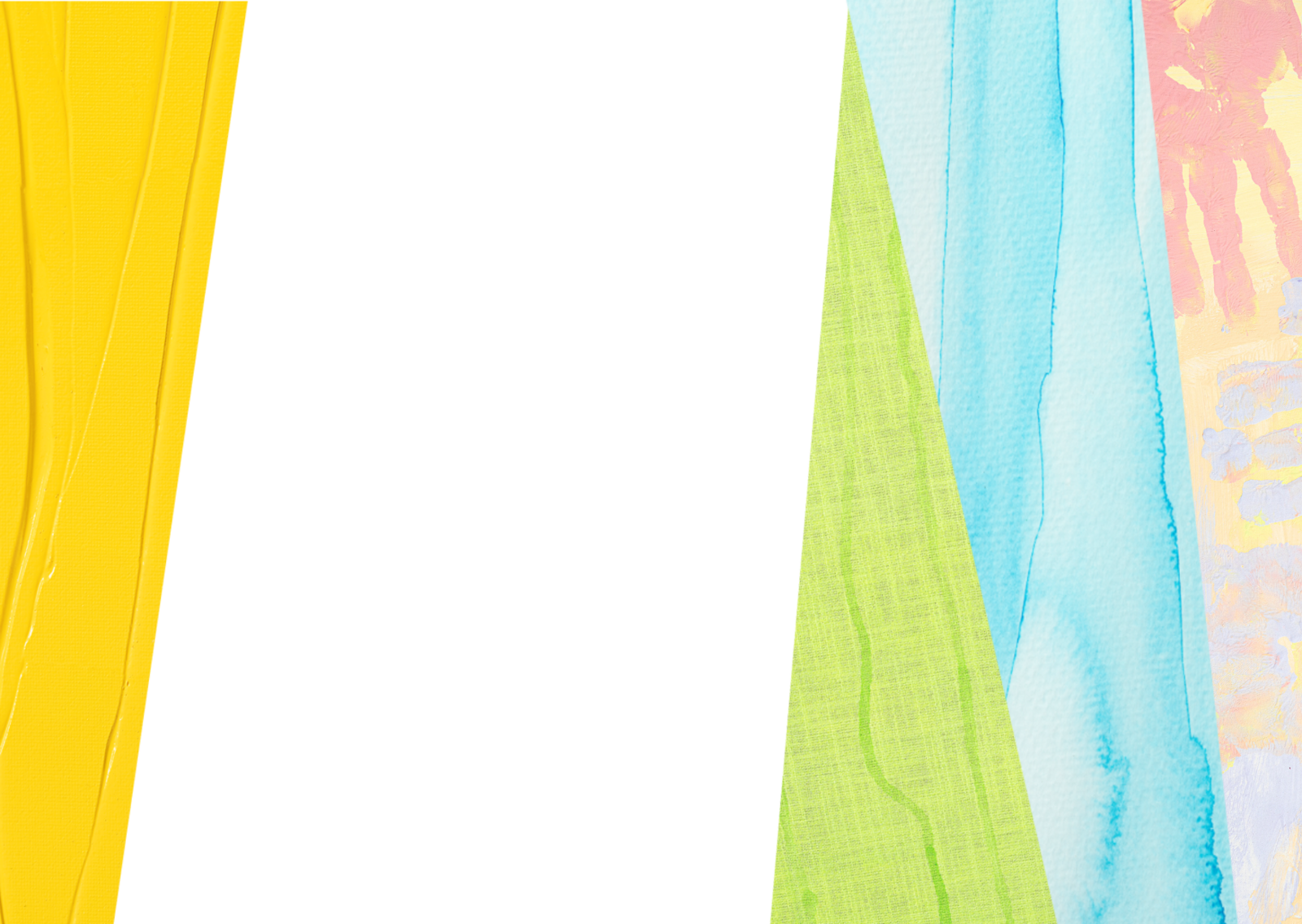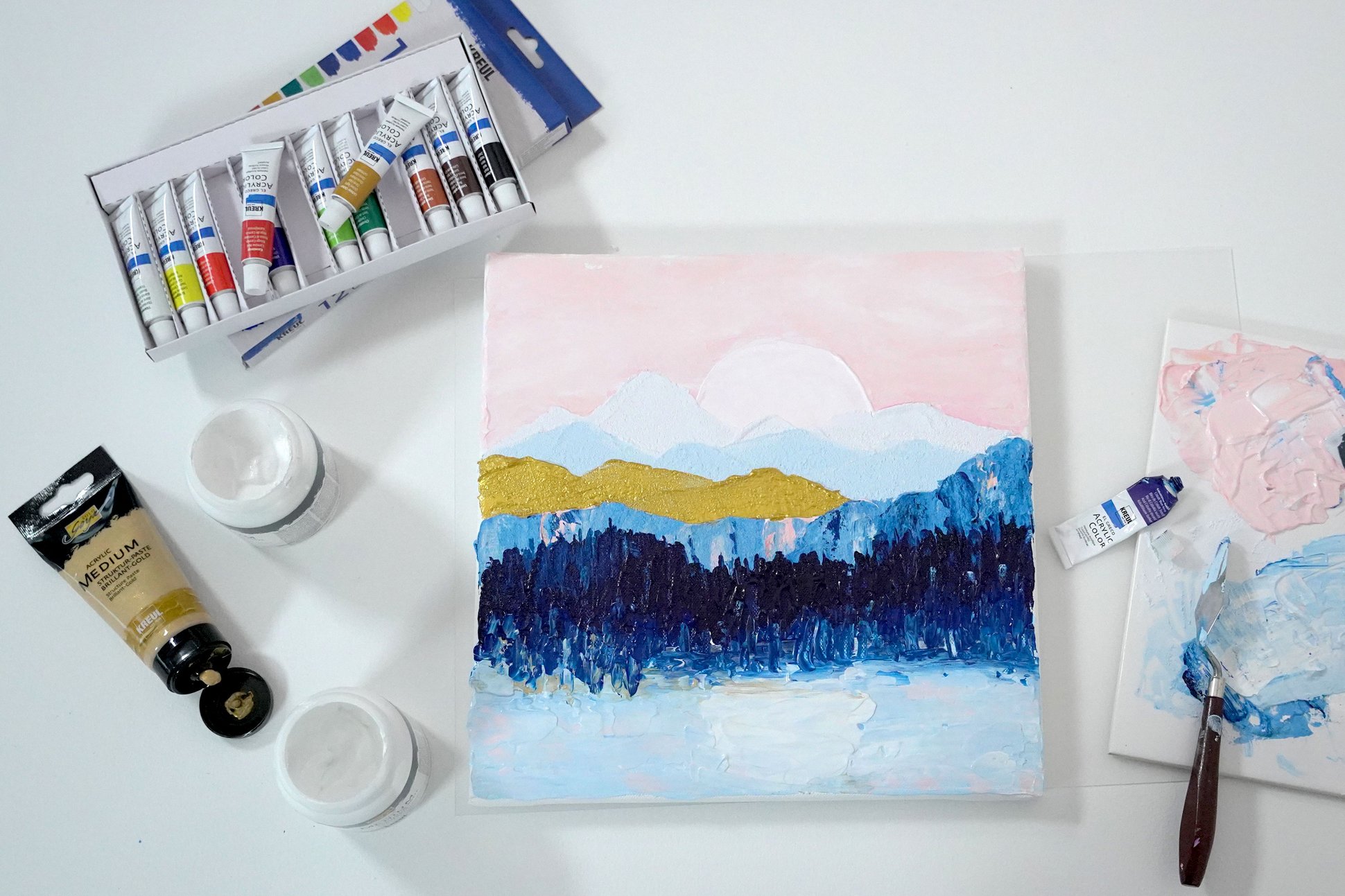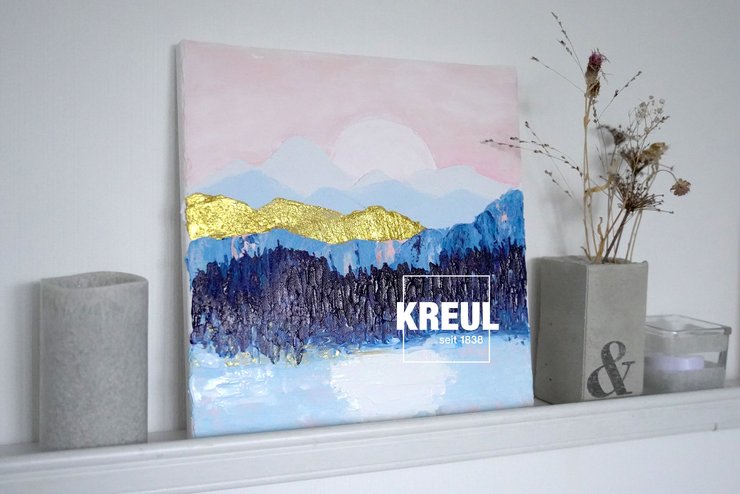
Impasto technique – soft shades with frosty nuances
12/18/2023 |- KREUL el Greco Acrylic
- SOLO GOYA Pastes and mediums
- Ideen für Künstler
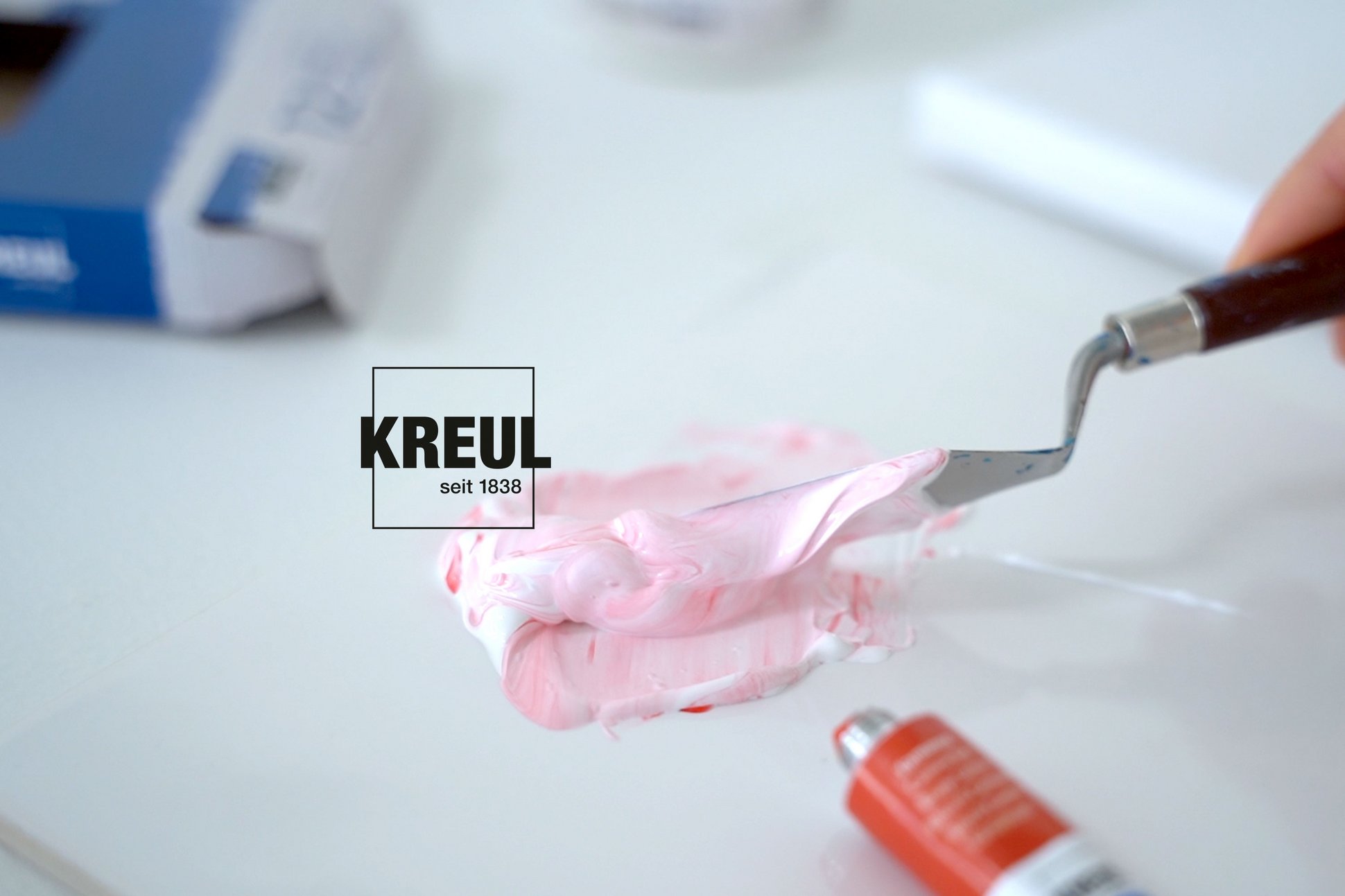
Step 1: Mix apricot and use a spatula to create the sky
First, we use a spatula to take a tablespoon quantity of SOLO GOYA Acrylic Medium Structure Paste Universal and put this on our palette – a glossy white tile. This has the advantage that the colours stay clean, and, once you have finished painting, you can simply wash the tile and use it again.
Then we take KREUL el Greco Acrylic paints in Carmine Red and Light Yellow Ochre and mix a pea-size amount of each into the Structure Paste until we get a lovely warm shade of apricot. The highly pigmented artists' acrylic paints in study quality are ideal for pastose painting.
With the help of the palette knife, we apply a thick layer of the mixed apricot shade all over the top third of our canvas. To get a cloud effect, we use the palette knife again to take some SOLO GOYA Acrylic Medium Structure Paste Universal and move the palette knife at a 45° angle over the apricot-coloured sky. This produces a slight marbling of the background, creating a 3D effect.

Step 2: Add sun with a spatula
As drying doesn't take long, after we have quickly cleaned any remaining paint off our spatula, we can dip it again in the SOLO GOYA Acrylic Medium Structure Paste Universal and use a constant movement to place a semi-circle at the bottom of our sky. To ensure lightness, the semi-circle should peak around 2 mm near the centre of the canvas.
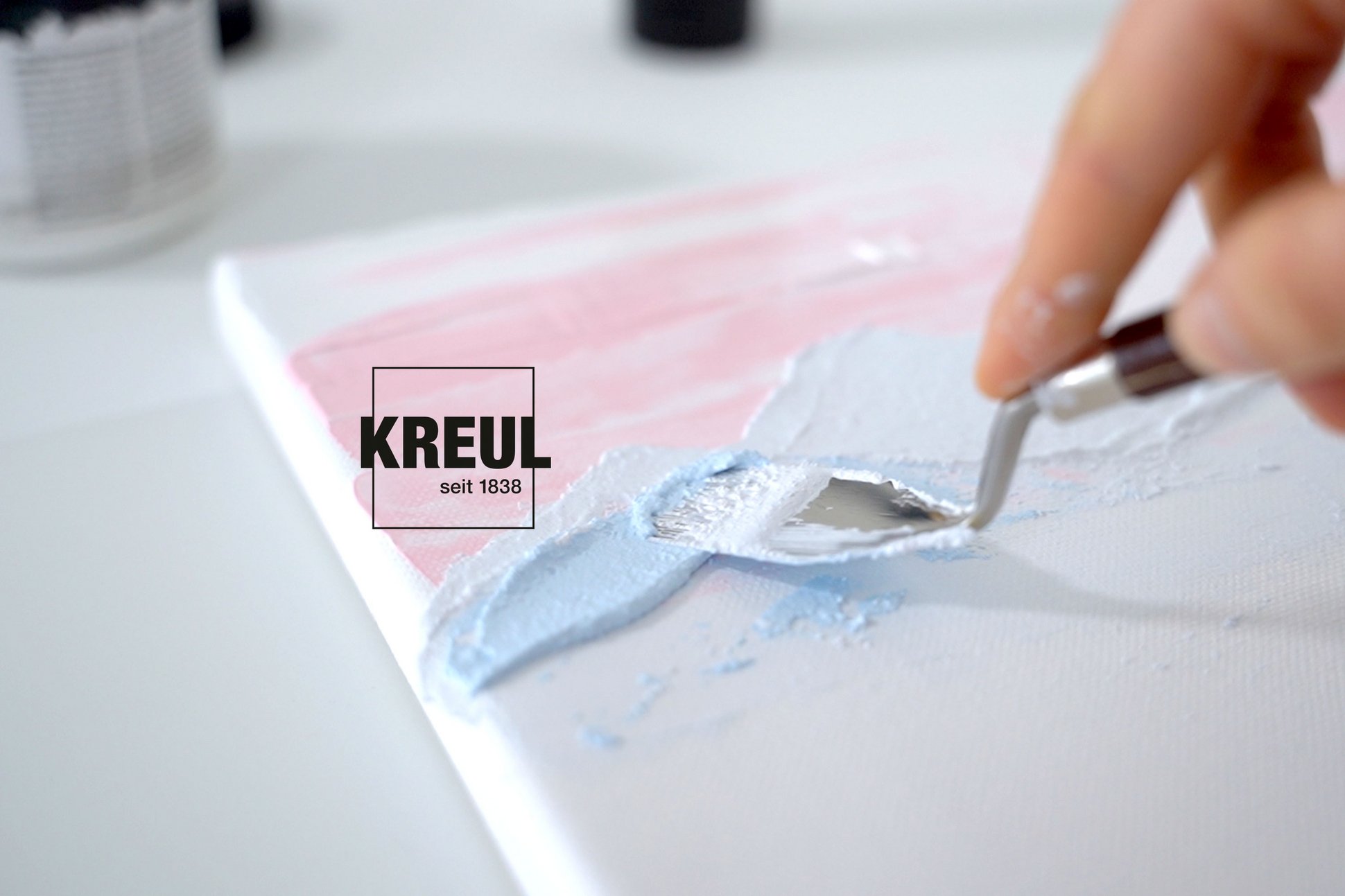
Step 3: Mountains in cool blue
To give our impasto artwork some depth, we apply the mountains in cool blue shades and use SOLO GOYA Acrylic Medium Structure Paste Fine Sand to structure them. As this dries to sandy texture, it clearly contrasts the mountains from the sky.
We mix a tablespoon of SOLO GOYA Acrylic Medium Structure Paste Fine Sand with a lentil-sized amount of dark cobalt blue. We use this light ice-blue for our first chain of mountains. To get clear-cut edges, we move the palette knife horizontally at a 45° angle in a jagged line over the canvas. If we change the direction while we are applying the mountains with a spatula, we can clearly define the individual mountains. Now we mix another pea-size quantity of cobalt blue into our ice blue and can paint our second chain of mountains in an ever-so-slightly darker shade.
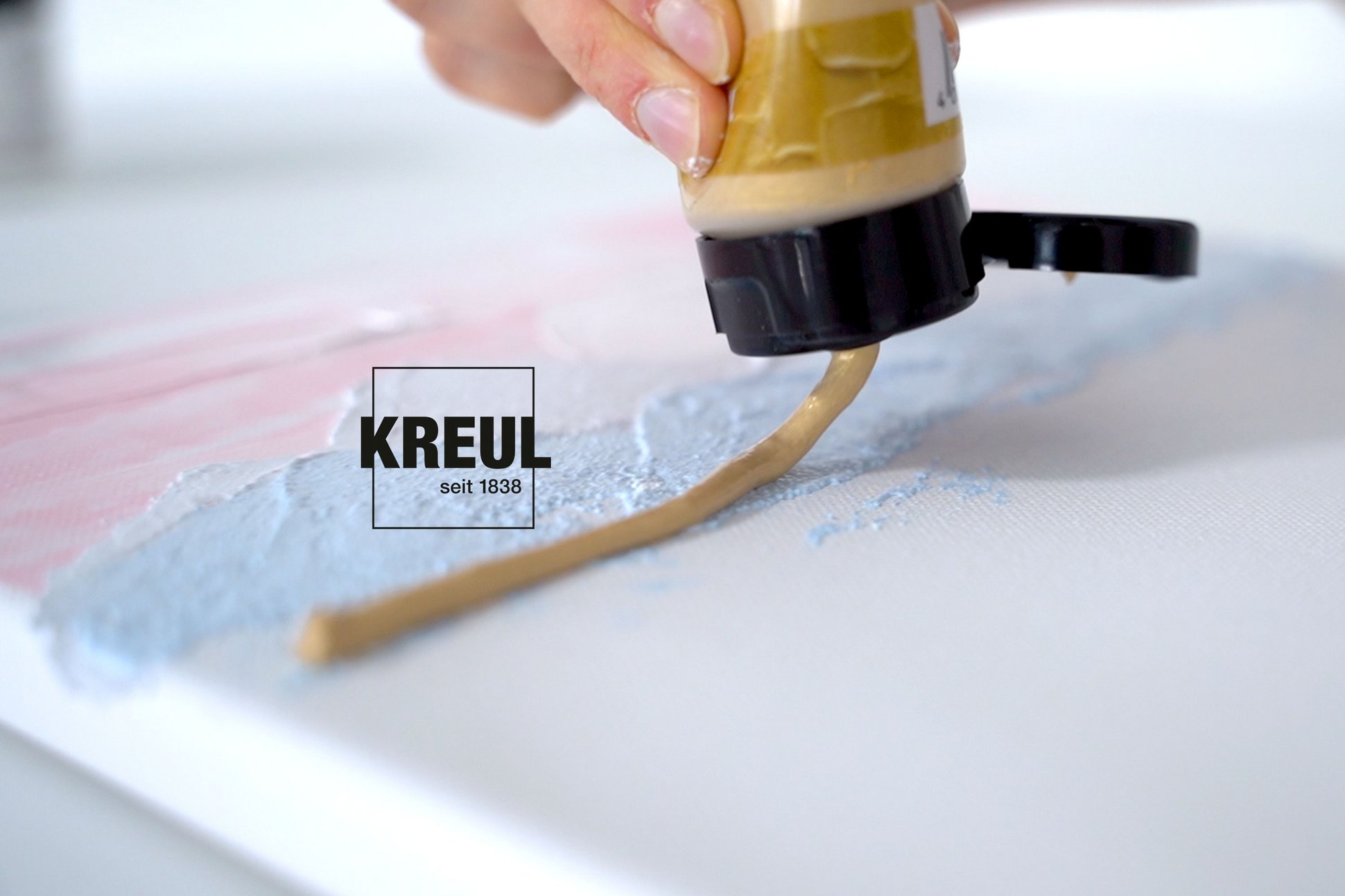
Step 4: Gold to catch the eye
For a touch of glamour, in the next step, we add a thick line of SOLO GOYA Acrylic Medium Structure Paste in Brilliant Gold. This line continues to around the middle of our landscape picture. It's good to know that, in the first instance, SOLO GOYA Acrylic Medium Structure Paste Brilliant Gold looks pastel but dries to an intense sheen. Holding the spatula loosely in our hand and without applying much pressure, we draw another chain of mountains in soft gold onto the canvas. Use the tip of the spatula to retouch the mountain summits.

Step 5: Marbled-effect blue meets apricot
The final chain of mountains gets another wow effect. For this, we mix ultramarine blue into our light blue shade, but don’t mix this completetely so that you can still see some streaks of ultramarine blue, Then, we take a clean spatula to take a larger quantity of this colour and draw this quickly through our apricot colour. Now we have two colours on our spatula.
At our bottom line of gold, we hold our palette knife horizontally with the long edge against the painting and move this from top to bottom. So that the colours don’t mix too much, we take new paint and don’t go over one area too often. The marbled effect can be intensified at the end by adding highlights in apricot and ultramarine blue.
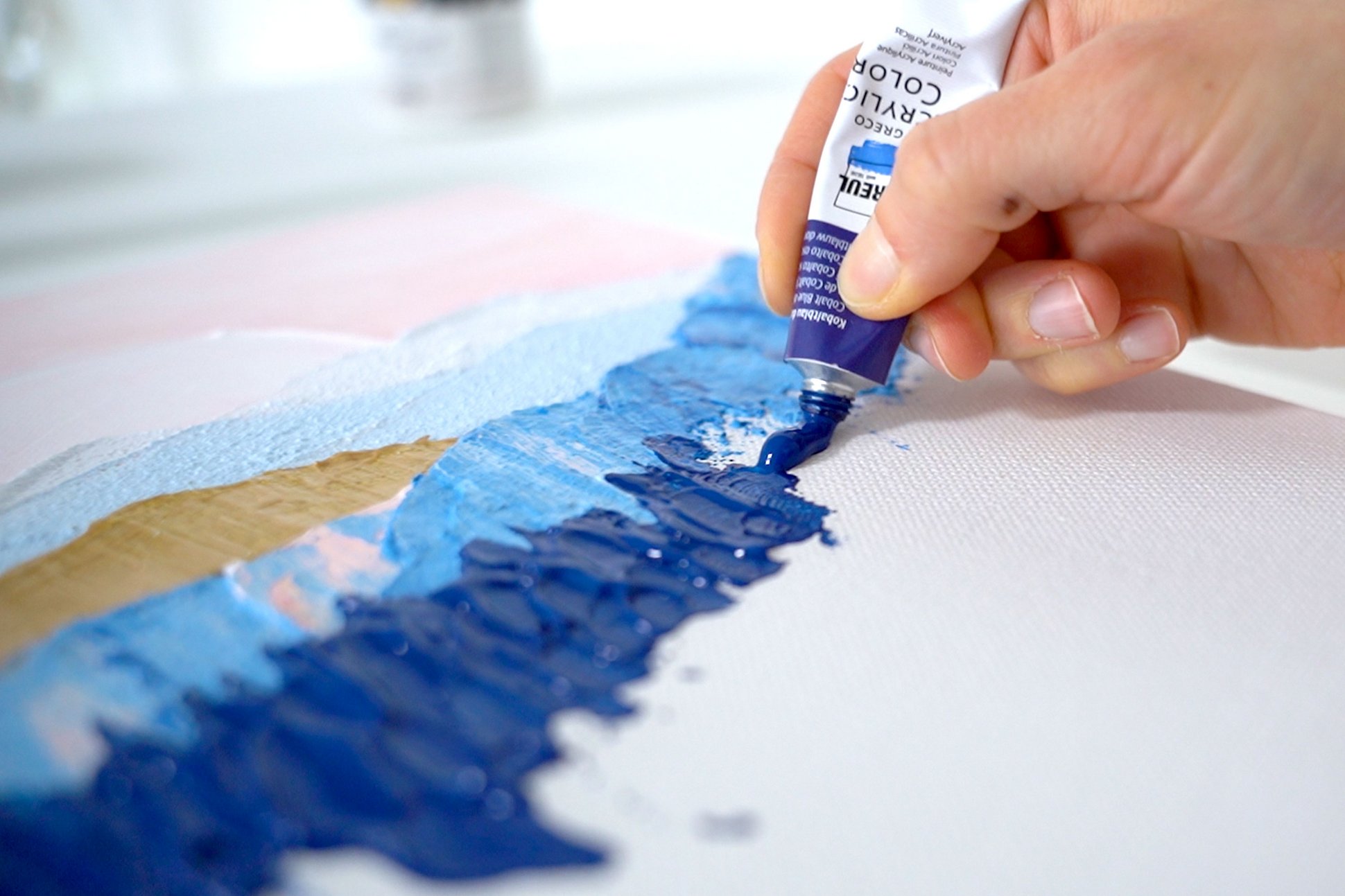
Step 6: Darkening the forest
Even without Structure Paste, you can use KREUL el Greco Acrylic Paints to get a structure by applying thick layers of paint. That is why we take Ultramarine Blue and apply it directly onto the canvas. We press the spatula flat onto the canvas for a short time and move it up and down in jagged movements.
We repeat this several times, being bold with quantity of paint, the rule here is: the more the merrier. To give our wintery forest pines beautiful tops, we can create individual tops by applying the edge of the palette knife to the canvas and carefully moving it slightly upwards.

Step 7: Reflections in the water
Tranquil lies the lake that round offs our artwork. For this, we take SOLO GOYA Acrylic Medium Structure Paste Universal again. This gives our lake an as-smooth-as-glass finish and watery appearance. We use the light blue shade and draw it in straight movements from right to left over the remaining part of the canvas. In parts, we use the remainder of the apricot colour as well as Brilliant Gold Structure Paste to create light sky and mountain reflections.
We pull the still not completely dry fir trees with wavy movements into our lake and use the white SOLO GOYA Acrylic Medium Structure Paste Universal to visualize a reflection. We are so excited to see your artworks! Show us on Instagram and send a photo to @kreulpaint.
